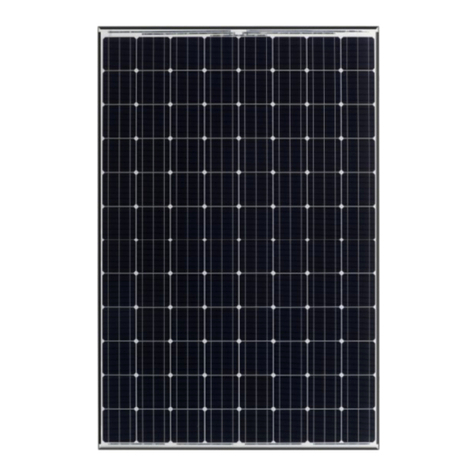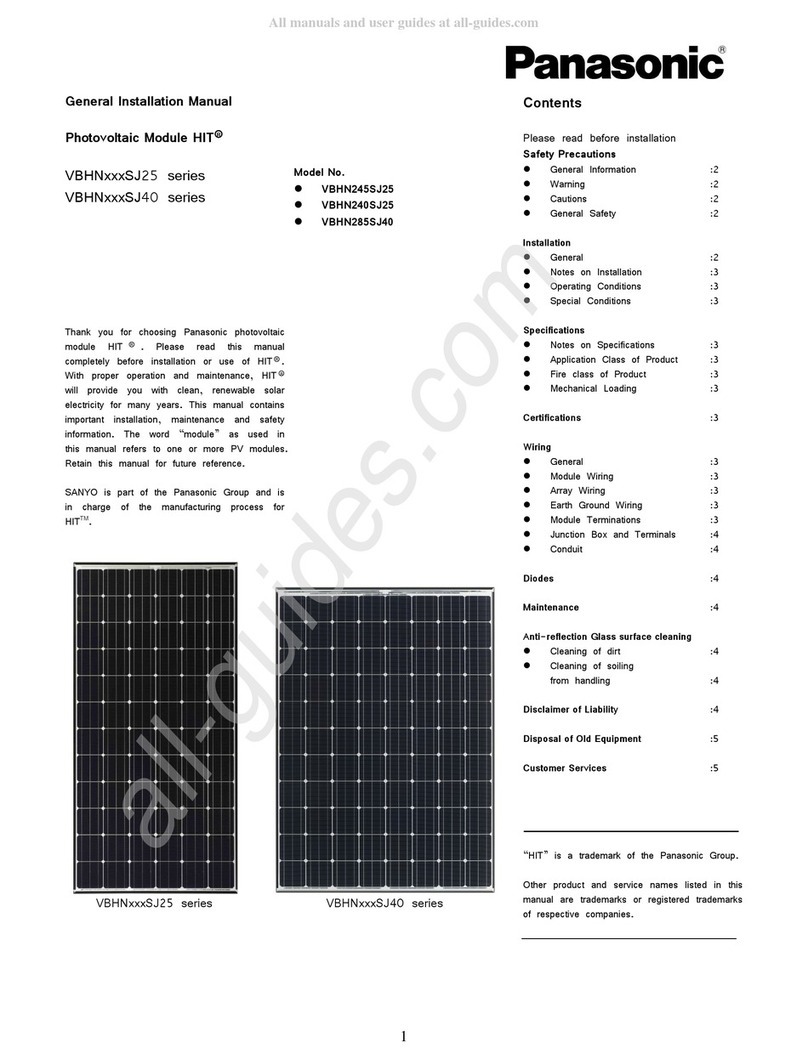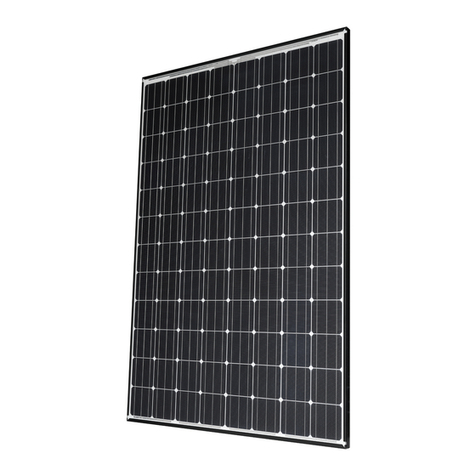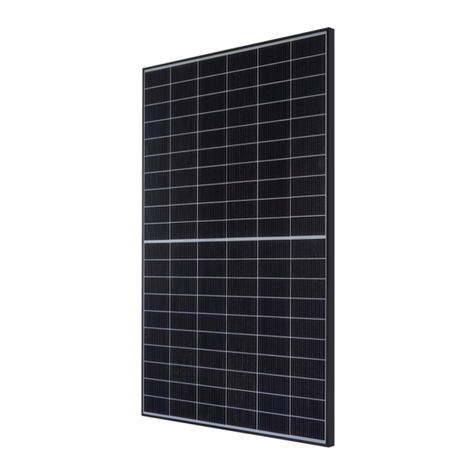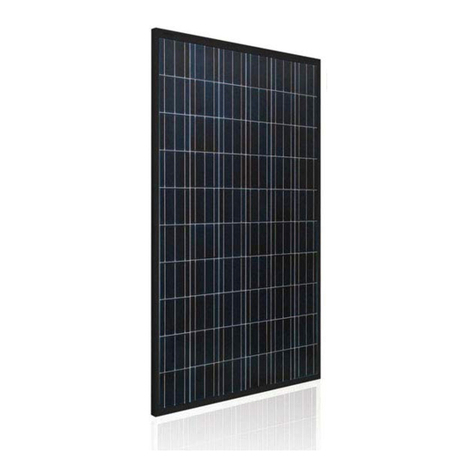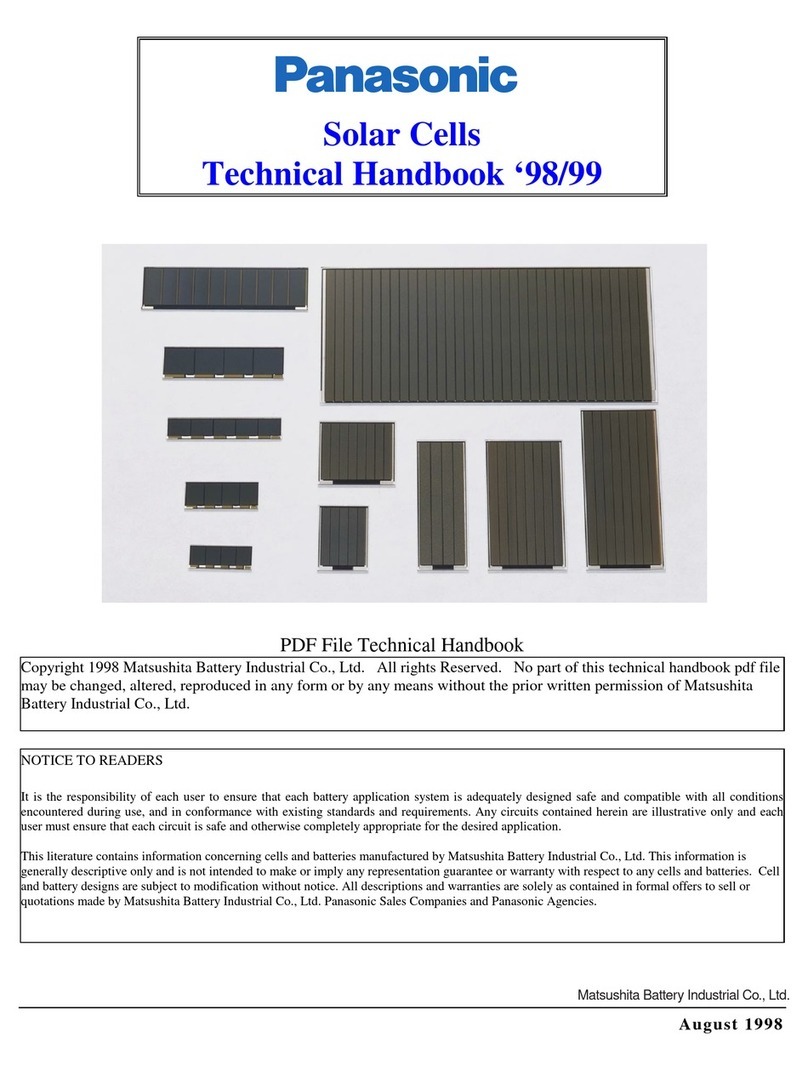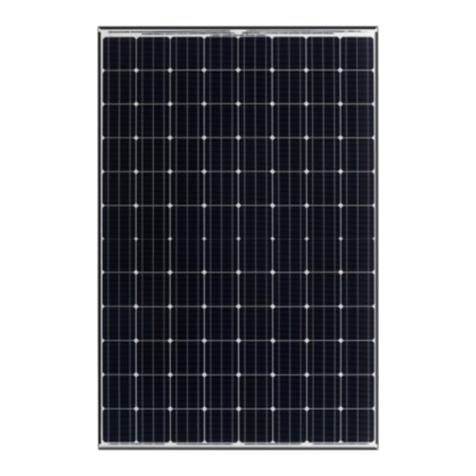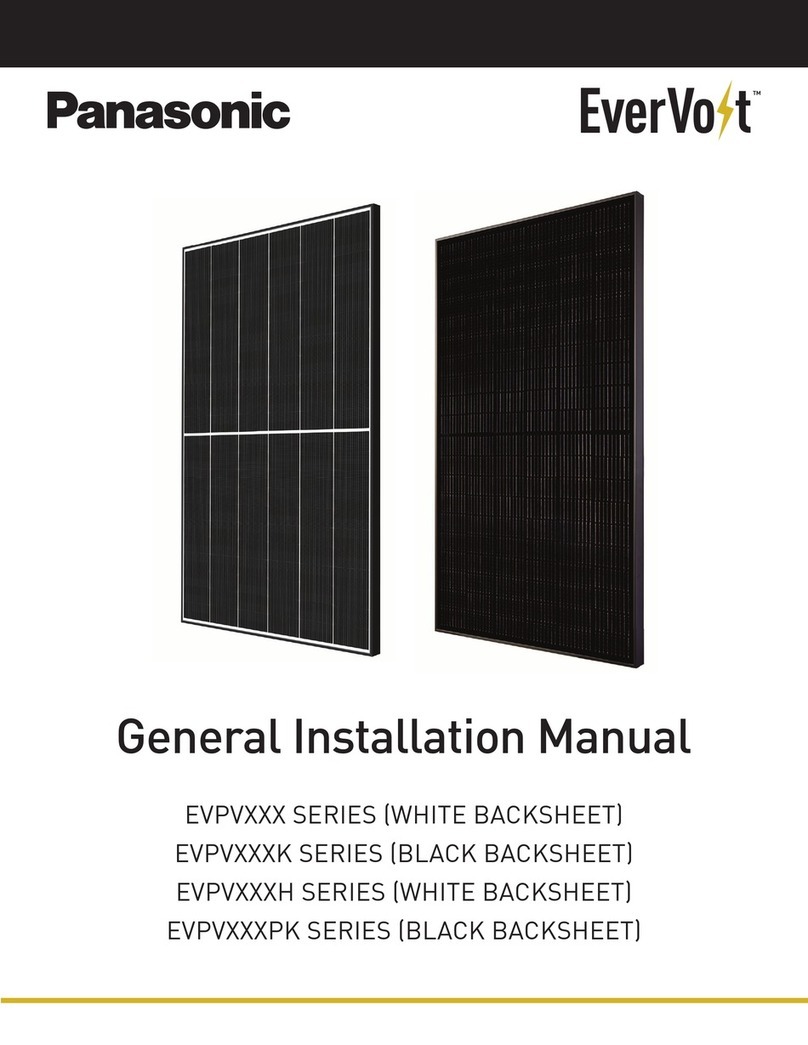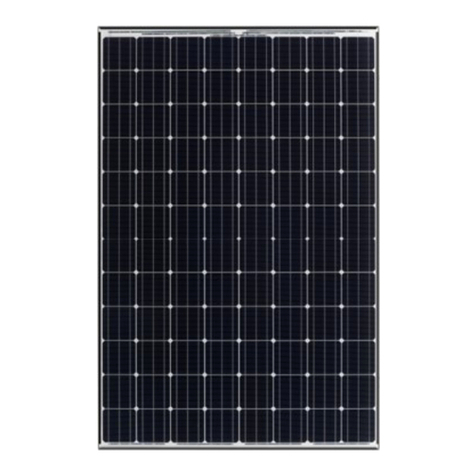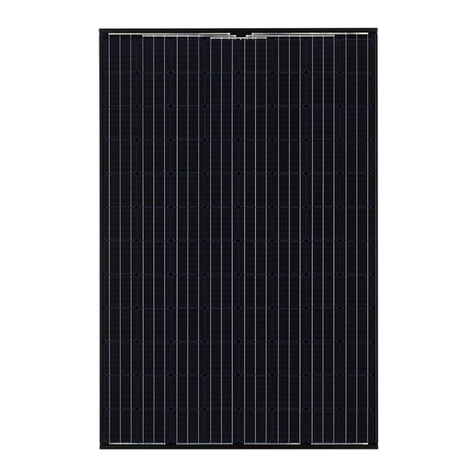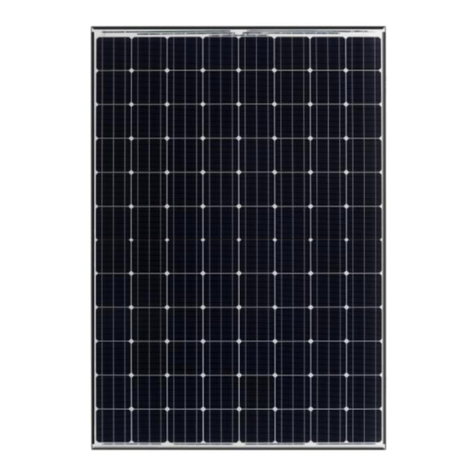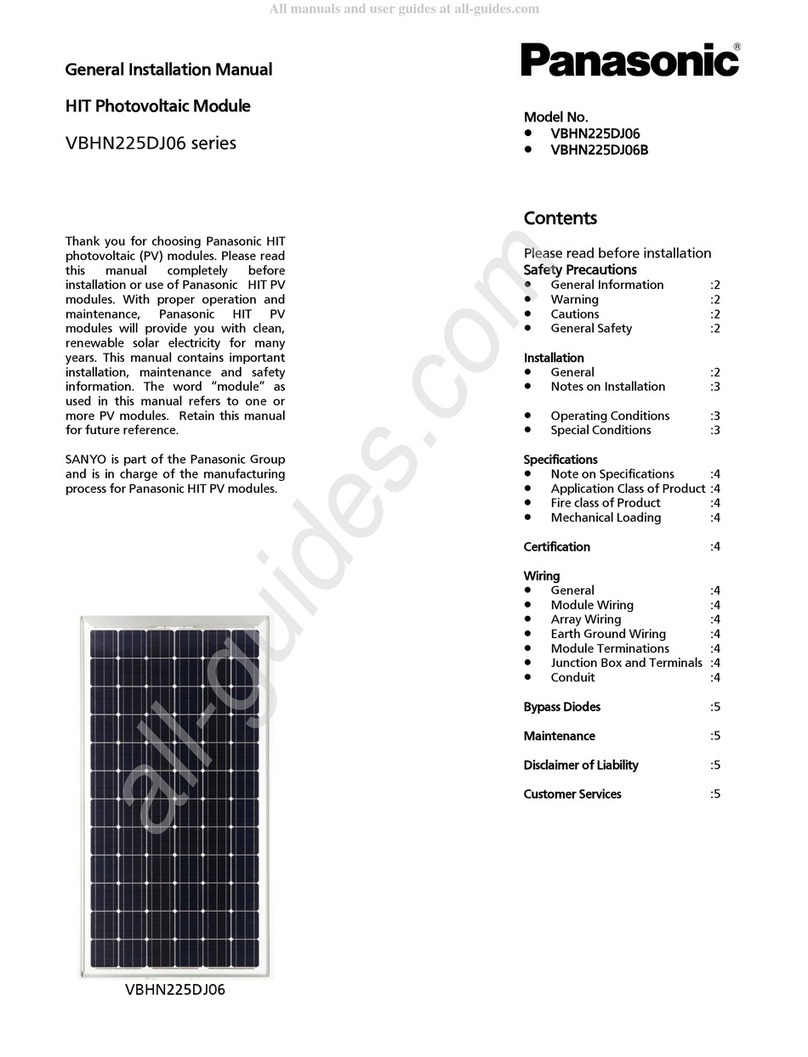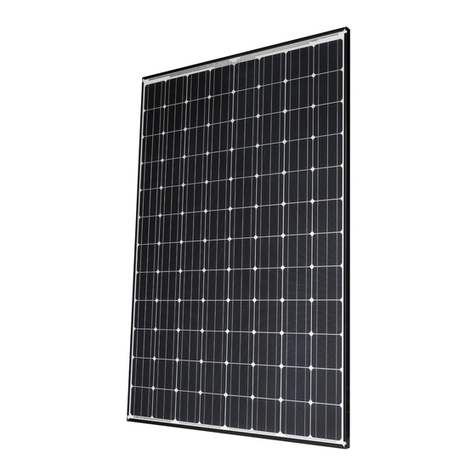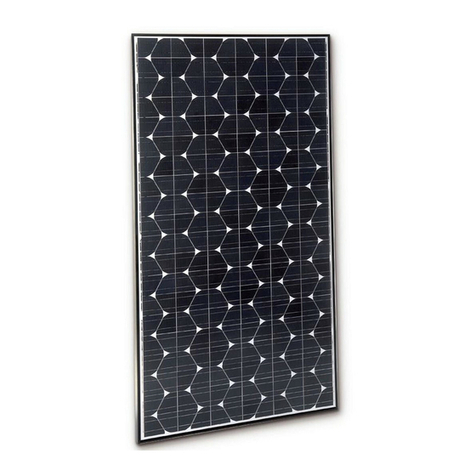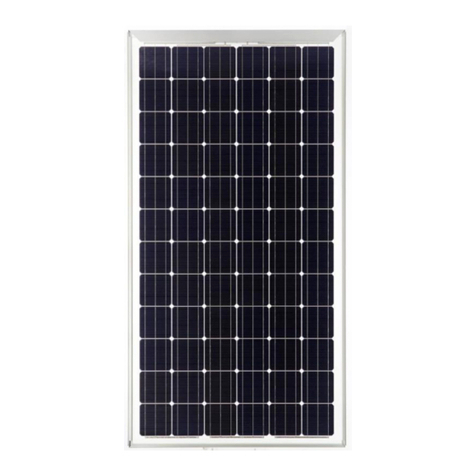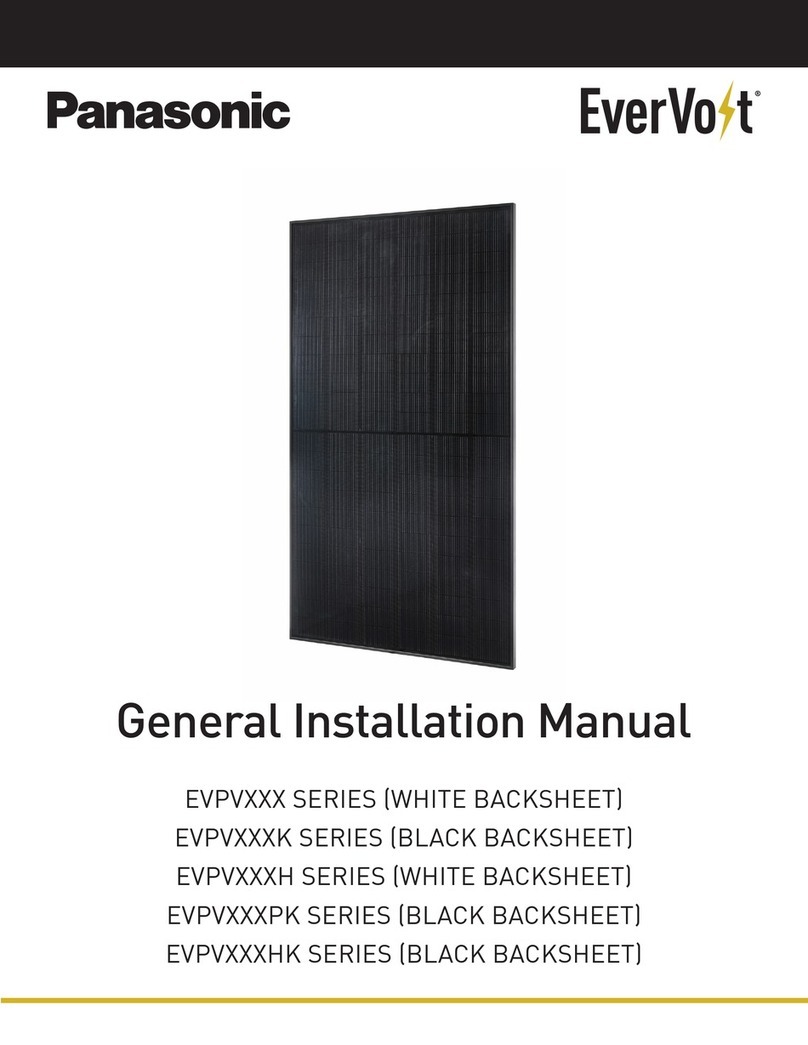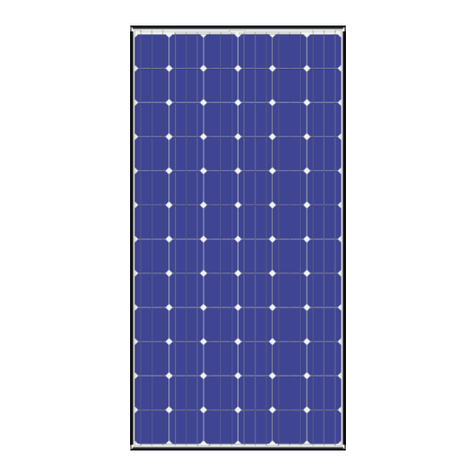2
SAFETY PRECAUTIONS
• All instrucons should be read and understood
before aempng to install, wire, operate, and
maintain the module.
• The installaon of modules requires a great
degree of skill and should only be performed by
qualied licensed professionals, including,
without limitaon, licensed contractors and
licensed electricians.
• The installer assumes the risk of all injury that
might occur during installaon, including,
without limitaon, the risk of electric shock.
• Before installing modules, contact the appropri-
ate authories to determine permissions,
installaon and inspecon requirements, which
should be followed.
• Be sure that the construcon or structure (roof,
etc.) where the modules are being installed has
enough strength.
• Both roof construcon and module installaon
design have an eect on the re resistance of a
building. Improper installaon may contribute
to re hazards. Addional devices such as
ground fault, fuses, and disconnects may be
required.
• For a non-integrated module, the assembly is
to be mounted over a re resistant roof cover-
ing rated for the applicaon.
• For modules mounted on roofs, special con-
strucon or structures may be required to help
provide proper installaon support.
• Do not install the module where ammable
gases or vapors are present.
• Do not use modules of dierent specicaons
in the same system.
• Follow all safety precauons of other system
components used.
• In some areas, local electrical codes may gov-
ern the installaon and use of modules.
WARNING
To avoid the hazard of electric shock, sparks, re and
injury
• The modules generate DC electrical energy
when exposed to sunlight or other light
sources, so cover the enre front surface of the
modules with a dense, opaque material such as
a cardboard box, during installaon and han-
dling of the modules.
• The shock hazard increases as modules are
connected in parallel, producing higher current,
and as modules are connected in series, pro-
ducing higher voltages.
• The shock hazard increases as modules
with nominal open-circuit voltage (Voc) in
excess of 45 V, and/or modules rated for
maximum system voltage in excess of 45 V.
• Wear suitable clothing, gloves and guards to
prevent from direct contact with 30 VDC or
greater.
• Work only in dry condions, with dry modules
and dry tools.
• Children and unauthorized persons should not
be allowed near the installaon of modules.
• Do not puncture or damage the back sheet of a
module. In case of a scratch on the back sheet,
please replace the module and discard the
scratched one. A scratch on the back sheet
poses a risk of exposing conducve parts.
• Do not disassemble the module, or remove any
parts installed by the manufacturer.
• Do not open a juncon box's lid.
• Do not touch the juncon box terminals.
• Do not change the wiring of bypass diodes.
• Do not connect or disconnect terminals while
modules generate electricity and connect
electrical load.
• Never leave a module unsupported or unse-
cured.
CAUTIONS
To avoid the hazard of injury, burn and damage to
the module
• Use a module for its intended purpose only.
• Be sure that all other system components are
compable, and they do not subject the mod-
ule to mechanical or electrical hazards.
• Do not arcially concentrate sunlight on a
module.
• Do not stand or step on a module.
• When carrying a module, two or more people
should carry it by its frame and wear non-slip
gloves.
• Do not carry a module by its wires or juncon
box.
• Do not drop a module.
• Do not drop anything on the surface of a mod-
ule.
• Do not hit the back sheet of a module by the
connector or other things.
• Do not disassemble a module, aempt
any repair, open the juncon box cover, nor
remove any parts installed by Panasonic.
There are no user serviceable parts within the
module or juncon box.
• Do not treat the back sheet or front surface
with paint or adhesives.
• Do not use or install broken modules. If you
nd a defect e.g. a glass breakage, please
contact a professional PV installer to replace
the module right away.
• Do not touch a module unnecessarily. The glass
surface and frames get hot.
